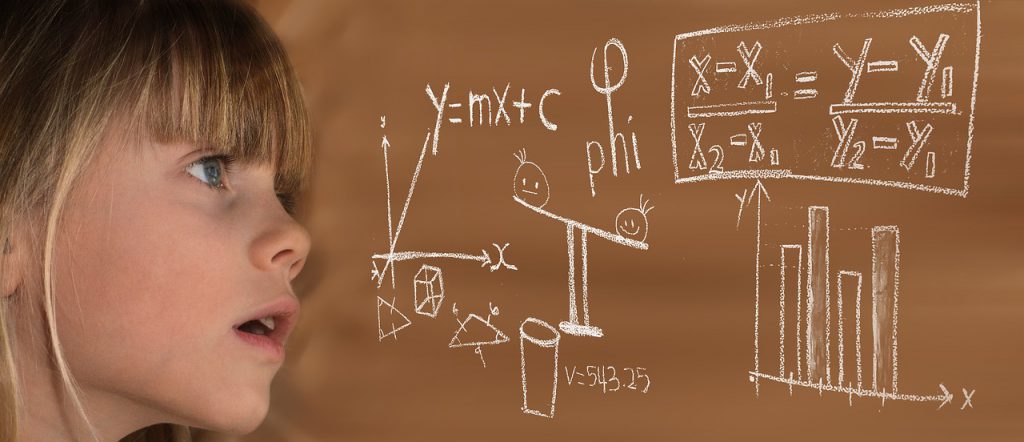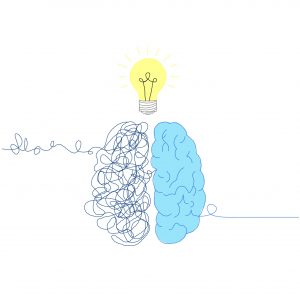What do you think about when you think about math? Most likely, the image of a calculator begins to form in your mind. This is no coincidence: the calculator was created by mathematicians in order to help them compute long, tedious, and difficult algebraic equations or formulas. These systems are called Computer Algebra Systems (CAS).

Today, calculators are much more than tools used exclusively by genius mathematicians and scientists. Indeed, few people can make it through the educational system without using one, and this fact is especially true regarding our children. Finding its origins in the early 1990s, the calculator controversy began to spread across the nation. All at once, students were saying goodbye to the by-hand symbolic manipulation procedures that had previously dominated school mathematics instruction for countless decades. Some scholars at the time, including the widely-published M. Kathleen Heid and Michael Todd Edwards, argued that hand-held calculators provided classrooms with a richer approach to mathematics.1 However, there were those who held that calculators could damage, rather than improve, general education. Edward M. Gray, for example, argued that focusing on the many different cumulative strategic methods of mental math is more important to nurture than simple calculation. He was wary of the widespread implementation of calculators, as he believed that they had the power to sway the attention and subsequently cause a fall in performance.2 In addition to these viewpoints, the topic of disabled accommodation was also a common point of academic contention. The few studies done by other scholars seemed to point to technology as an aiding tool for those with learning disabilities and found that they generally equalized the academic standard of the classroom. Before long, however, the arguments in favor of calculators faded as it became clear that the implementation of the mathematics tools in classrooms began to cause children to have a less conceptual understanding of mathematics.3
The best way to organize this debacle is to look at why the calculator was implemented into general education in the first place. The CAS systems are also known as symbolic manipulators. Since the early 1980s, symbolic manipulation programs, or computer-based mathematics packages that perform exact arithmetic and symbolic algebra calculations, have been available for use by secondary mathematics teachers and students. The introduction of these systems into general education was originally seen as an open door to a possible shift from the emphasis on the traditional means of solution to a more nuanced and conceptual understanding of real-life aspects. Instead of wasting time by attempting problems that were near impossible to do on paper, one could now reach the same conclusion in a clear cut and understood manner in a matter of seconds. Shocked by their potential, scholars like Heid and Edwards believed that these systems could help bring about the creation of a richer approach to mathematics.4 Having access to classroom-available technological power, they claimed, enabled teachers to provide students with a whole new approach to mathematics and more solution-based classes, such as algebra. With the addition of the calculator to the classroom, students could hypothetically use symbolic manipulation, sense, and disposition all to reach an accurate conclusion. The process of learning mathematics would become one of paper and computer and could end with a better understanding of the underlying concepts of the subject. Defenders of calculators in classrooms would also point to the fact that the CAS keeps getting better and more advanced with each passing year as a reason to keep them in the hands of children. Pairing these powerful machines with conceptual learning, they argued, becomes increasingly important as society continues to advance, and children need to learn and adapt to the changes in the real world. Heid and Edwards acknowledged that this technology had the ability to change the way math was taught, and they believed that the CAS represented nothing more than an enrichment to the already existing curriculum.5

In addressing this line of reasoning, Edward Gray argues that the main focus should be on the conceptual understanding of mathematics alone. In his eyes, the calculator isn’t needed unless one finds oneself attempting to solve a near-impossible question. Branching off of this idea, Gray went on to argue that the focus on “learning how to solve” is being disregarded entirely by the widespread use of calculators. In constructing his argument, Gray gave many examples of how the average student from ages 7 to 12+ computes arithmetic. In his study, he found that the main methods of problem-solving were count-all, count-on, and known/derived facts. The use of cumulative strategies to solve almost any combination of addition, subtraction, multiplication, and division, was common throughout the classroom and observed in every student.6 Teaching students to use already understood concepts, Gray claimed, proved to be the most impactful method for their education. It was clear that those who used the methods listed above had higher performance rates than those who didn’t. It was also clear that not many students knew how to use derived facts, which is basically knowing to call back to past information. This is clearly a problem that needs to be addressed head-on before we even think of touching a calculator. While graphic calculators may nurture the problem-product linkages, the arena for further consideration must focus more sharply on the different types of thought that are brought to bear on mathematical activity by the able and the less able alike.7
Our dependence on calculators is made eerily clear by a popular study done by Bridgeman, Harvey, and Braswell. The study consisted of about a hundred college-bound juniors and had multiple levels of testing. Out of the total students, over 60% stated that they used a calculator almost every day, with only one student claiming to never make use of a calculator! The question remains, however: does the use of the calculator actually have any bearing on our abilities? The study attempts to answer this important query by testing students to find their average SAT-M test scores. After acquiring the scores, they then compared their results with the official results from College Board for college-bound seniors in 1991.8

This collection of data would represent the control or the base data that the researchers would utilize. After finding the control, they began adding stipulations to the test and subsequently observed how their actions affected the scores. They found that the use of calculators resulted in a modest score increase on a test composed of the type of mathematical reasoning found on the SAT, although effects on individual items ranged from positive through neutral to negative. The test also consisted of many different ethnicities and backgrounds, which caused the data to be a bit more skewed and less reliable as an overall conclusion. From the base data, the addition of calculators did not seem to drastically influence the overall scores of the experimental group of students. Instead, they were merely proven effective on conceptual problems by turning them into simple calculation routines and by benefiting low-scoring students. However, the removal of calculators altogether would actually benefit the high-scoring students. Thus, the study ultimately proved that it is impossible to make generalizing statements such as “calculators always improve scores,” because every student has a different level of understanding.9
Despite the presence of controversy that surrounds them, calculators will remain useful tools that can sometimes aid those with less conceptual understanding of mathematics. Many people are born with learning disabilities that cause math to be extremely difficult to understand. With that in mind, it shouldn’t be easy to say that learning math should be based on conceptual understanding and connections with derived knowledge. Attention to calculator use and students with disabilities is necessary as a combined result of the general controversy of calculator use in mathematics education, the lack of evidence-based value on calculators for modern society, and the specific controversy regarding calculators for students with disabilities. The largest of these controversies has to do with the underlying idea of fairness. Many parents think that it would be unfair to limit calculator use to special accommodations for disabled students because they believe that it will give them a supposed advantage. The use of calculators by students with disabilities for computation, however, has been likened to common tools to assist students with other types of disabilities. You would never deny a physically disabled child mobile technology, so the idea that giving children with learning disabilities calculators is unfair is simply discriminatory in nature.10 Nevertheless, to prove these allegations wrong, three scholars, Emily C. Bouck, Gauri S. Joshi, and Linley Johnson, conducted a test to see the difference in calculator use among students with and without disabilities. The test they set up involved 146 sixth-graders and 149 seventh-graders, of which about 17% had learning disabilities. The children were given both a multiple-choice and an open-ended exam. At the end of the test, students self-reported using calculators more often on multiple-choice rather than open-ended problem-solving assessments across the board, with the exception of sixth-grade students without disabilities, who received traditional curriculum materials. Students without disabilities self-reported using a calculator more frequently on both types of assessments as compared to students with disabilities. The data from this study found that students with disabilities answered more questions correctly when they used a calculator, and went on to prove that they were more likely to answer questions correctly when using this tool. This observation was also true for students without disabilities.11
The controversy of calculator use in pre-college math has been rampant since the first mention of the computer systems. As a result, there have been countless studies on the effectiveness of calculators and how they affect our overall understanding of mathematics. Although the idea of widespread calculator use is steeped in subjectivity, it must be affirmed that mental math is enhanced by knowledge of how to use calculators correctly. The calculator is supposed to encourage learning by bettering one’s general understanding of mathematical concepts—It makes concepts that are difficult to understand easier and quicker to learn. Regardless of one’s stance on the matter, each side agrees that mental math is a very important and crucial subject to learn as a young child. Without mental math, basic mathematics is very difficult and the child may even suffer in the long run. Calculators may be given out as accommodation for those with disabilities, but because they have an innate tendency to discourage the memorization of basic mathematical theory, they should be left out of the required supplies for the remainder of students. As evident in the study by Bridgeman, Harvey, and Braswell, the use of a calculator barely changed the overall scores of a variety of children in different grade levels. In fact, it may have made conceptual problems harder to solve because of common calculator errors. The best way to integrate calculators is to only include them in high schools so that prior knowledge is gained before students are given access to the tools. Looking through multiple studies, it is clear that calculators are not to blame. The educational system needs to regain its curriculum and use calculators as tools and not as crutches. Calculators are not the death of learning today, but they could become it if this blatant misuse continues.12
- M. Kathleen Heid and Michael Todd Edwards, “Computer Algebra Systems: Revolution of Retrofit for Today’s Mathematics Classrooms?,” Theory Into Practice 40, no. 2 (2001): 128-129. ↵
- Edward M. Gray, “An Analysis of Diverging Approaches to Simple Arithmetic: Preference and Its Consequences,” Educational Studies in Mathematics 22, no. 6 (1991): 572-573. ↵
- Emily C. Bouck, Guari S. Joshi, and Linley Johnson, “Examining calculator use among students with and without disabilities educated with different mathematical curricula,” Educational Studies in Mathematics 83, no. 3 (2013): 382-383. ↵
- M. Kathleen Heid and Michael Todd Edwards, “Computer Algebra Systems: Revolution of Retrofit for Today’s Mathematics Classrooms?,” Theory Into Practice 40, no. 2 (2001): 128-129. ↵
- M. Kathleen Heid and Michael Todd Edwards, “Computer Algebra Systems: Revolution of Retrofit for Today’s Mathematics Classrooms?,” Theory Into Practice 40, no. 2 (2001): 132-134. ↵
- Edward M. Gray, “An Analysis of Diverging Approaches to Simple Arithmetic: Preference and Its Consequences,” Educational Studies in Mathematics 22, no. 6 (1991): 567-569. ↵
- Edward M. Gray, “An Analysis of Diverging Approaches to Simple Arithmetic: Preference and Its Consequences,” Educational Studies in Mathematics 22, no. 6 (1991): 572-573. ↵
- Brent Bridgeman, Anne Harvey, and James Braswell, “Effects of Calculator Use on Scores on a Test of Mathematical Reasoning,” Journal of Educational Measurement 32, no. 4 (1995): 328-329. ↵
- Brent Bridgeman, Anne Harvey, and James Braswell, “Effects of Calculator Use on Scores on a Test of Mathematical Reasoning,” Journal of Educational Measurement 32, no. 4 (1995): 339. ↵
- Emily C. Bouck, Guari S. Joshi, and Linley Johnson, “Examining calculator use among students with and without disabilities educated with different mathematical curricula,” Educational Studies in Mathematics 83, no. 3 (2013): 370-371. ↵
- Emily C. Bouck, Guari S. Joshi, and Linley Johnson, “Examining calculator use among students with and without disabilities educated with different mathematical curricula,” Educational Studies in Mathematics 83, no. 3 (2013): 381-382. ↵
- Brent Bridgeman, Anne Harvey, and James Braswell, “Effects of Calculator Use on Scores on a Test of Mathematical Reasoning,” Journal of Educational Measurement 32, no. 4 (1995): 330-331. ↵




41 comments
Stephanie Cerda
Personally, I’ve never found math enjoyable, or interesting at all. Admittedly, I do tend to rely on calculators a lot, and it’s interesting to hear about how advancements may impact our learning. I do agree that learning general concepts, and how things work is important, but I don’t find it of importance for myself. In general, it’s obviously important to know how to add, subtract, divide, and multiply by oneself. I think calculators are beneficial, but I agree education should be put first.
Andrea Degollado
Very well written article! This article was very interesting to read, I hate math and I would never have imagined myself clicking an article about math but the title really caught my attention. I never would have though of education having an expiration date. This article made a really good point as to how one must really understand numbers and they manipulation before using calculators just so we have a very a good understanding of math.
Judy Reyes
This was an interesting topic to write on. It was interesting to see a different perspective on calculators. I believe that math teachers as well as parents should know when to allow children to use calculators and when not to. A calculator is an important tool for many things however, the youth need to know the basics of how to do math manually as well.
Aaron Peters
What a well written article, It really is quite amazing to see how much engineering and genius was put into the creation of what today is seen as a common device, even pre installed onto most smartphones. I suppose i do see the argument for banning the use of calculators in algebra classes, as it does significantly simplify the process.
Michael Lazcano
I never really considered how much the calculator has influenced our modern math curriculum and how it could be limiting our growth at times. There are necessary times for calculators In certain situations I believe, but at the same time I probably think that because that’s how I was taught. I find it silly that today whenever kids hear they won’t be able to use calculators on some exams they’d get anxiety, but now it makes sense why people have a real fear about that. Great article overall and really thought provoking.
Vanessa Quetzeri
This is an interesting article and really does pertain to not only future generations, but our as well. I see several jokes about how some students cannot add or subtract simple equations because we have become so dependent on the calculator. I never thought of education having an expiration date, but have identified the misuse of these calculators in school settings.
Todd Brauckmiller Jr.
Never in all of my years would I imagine myself reading an article about math. This one in particular is well spoken and flows beautifully. For me most times I would end up using a calculator because I was very bad at math. Though I do agree that the continuation of miss use could cause more harm then good.
Eliezer Leal
Wow what a great article. I personally agree that calculator has diminished the educational capabilities of students in math. Although you can argue that the calculator helps the students that aren’t as capable as others in the class. I think that learning math by hand is yes difficult but definitely more efficient. If you keep practicing math becomes second nature.
Sydney Hardeman
This was a very interesting article as it gave a perspective on calculators that I had never considered before. I had no idea that there was such a controversy surrounding the little piece of equipment. We grow up using calculators in class, and many go on to use them in their professions or careers, and when using them they are often used as a crutch, which is a bit problematic because using them in that way does not promote learning. They should start being used in ways that teach people, and I think that starts in the classroom.
Jonathan B Doyon
Nicely written. I agree that a deep understanding of numbers their manipulation and the core concepts involved in said manipulation are needed before access to and thus reliance on the calculator should be tolerated. Understanding mathematical reasoning often seats more securely in one’s mind when we come to it in our own way. Only then do we build the world-to-self translation machine needed to be comfortably adroit in adapting to the more nuanced relationships and concepts of higher math and even theoretical concepts that may have little to no grip on the perceivable world. The best was to understand those things on your own is unique to each student, but the data seems to show a majority would be helped by being calc free for the beginning years of math education.